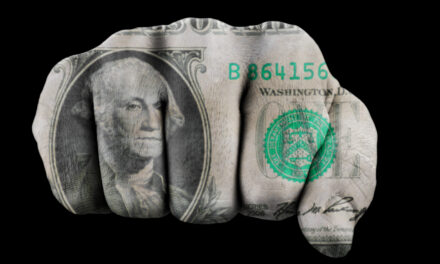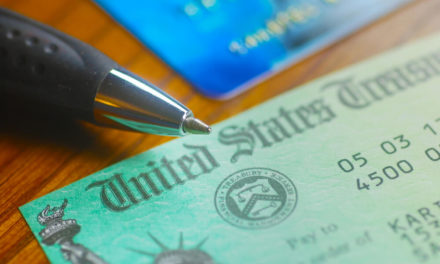Hiring in the United States rebounded in March as U.S. employers added a solid 196,000 jobs, up sharply from February’s scant gain and evidence that many businesses still want to hire despite signs that the economy is slowing.
The unemployment rate remained at 3.8%, near the lowest level in almost 50 years, the Labor Department reported Friday. Wage growth slowed a bit in March, with average hourly pay increasing 3.2% from a year earlier. That was down from February’s year-over-year gain of 3.4%, the best in a decade.
The employment figures reported Friday by the government suggest that February’s anemic job growth — revised to 33,000, from an initial 20,000 — was merely a temporary blip and that businesses are confident the economy remains on a firm footing. Even with the current expansion nearly 10 years old, the U.S. economy remains resilient and is expected to grow at a steady pace this year.
“The labor market continues to shrug off headwinds and chug along,” said Martha Gimbel, director of economic research at job listings website Indeed.
At the same time, the economy is facing several challenges, from cautious consumers to slower growth in business investment to a U.S.-China trade war that is contributing to a weakening global economy.
Investors didn’t react much to the report. The stock market rose modestly in morning trading, with the Dow Jones industrial average up 45 points.
The solid hiring and modest wage figure probably aren’t enough to change the Federal Reserve’s current plans to hold off on additional interest rate hikes, economists said.
Fed officials as recently as December had suggested they could raise rates twice this year. But in March, after financial markets turned volatile and inflation showed signs of slipping, the Fed said it would likely keep rates unchanged this year.
The jobs data “are not strong enough to dislodge the Fed from its current policy path,” said Joe Brusuelas, chief economist at RSM, a consulting firm.
Yet Ellen Zentner, an economist at Morgan Stanley, also noted that the report provides little reason for the Fed to cut rates.
President Donald Trump, however, urged the Fed to do just that and restore the bond-buying program it used to lower longer-term interest rates earlier this decade in the aftermath of the Great Recession, an approach known as “quantitative easing.”
“Our country’s doing unbelievably well economically,” Trump said.
But he also said Fed policy makers “really slowed us down,” and if they dropped rates and resumed buying bonds, “you would see a rocket ship.”
Quantitative easing was an emergency tool that the Fed, under Chairman Ben Bernanke, used to purchase trillions of dollars of government bonds and other securities. The third and last round was launched in 2012 when the unemployment rate was still 8 percent.
Trump has announced he intends to nominate two conservative political allies, Stephen Moore and former 2012 GOP presidential candidate Herman Cain for two current vacancies on the seven-member Fed board. His latest selections are seen as a significant escalation in efforts to exert more political influence on the traditionally independent central bank.
Larry Kudlow, head of the president’s National Economic Council, has said that the administration respects the independence of the Fed but that should not stop Trump from voicing his views on the Fed’s actions. Kudlow was the first administration official to call for the Fed to cut interest rates, saying last week that he believed a cut of one-half percentage point would be appropriate as an insurance policy against the economy slowing .
So far this year, U.S. job gains have averaged 180,000 a month, easily enough to lower the unemployment rate over time, though down from a 223,000 monthly average last year.
Last month, job growth was strongest in the service sector. Health care added 49,000 jobs, restaurants and bars 27,000, and professional and business services, which includes such high-paying fields as engineering and accounting, 37,000.
Manufacturers cut 6,000 jobs, marking the first decline in a year and a half. The weakness stemmed from a sharp drop in employment at automakers, likely reflecting layoffs by General Motors. Construction firms added 16,000.
The overall economy is sending mixed signals. Most indicators suggest slower growth this year compared with 2018. That would mean hiring might also weaken from last year’s strong pace.
Consumers have shown caution so far this year. Retail sales fell in February, and a broader measure of consumer spending slipped in January, potentially reflecting a waning effect of the Trump administration’s tax cuts. Businesses have also reined in their spending on industrial machinery and other equipment and on factories and other buildings.
And in Europe and Asia, weaker economies have reduced demand for U.S. exports. Europe is on the brink of recession, with its factories shrinking in March at the fastest pace in six years, according to a private survey.
The U.S. trade war with China has weighed on the Chinese economy, which has hurt Southeast Asian nations that ship electronic components and other goods that are assembled into consumer products in China’s factories.
Economists now forecast that the U.S. economy will expand roughly 2% to 2.5% this year, down from 2.9% last year.
Some positive signs for the economy have emerged in recent weeks: Sales of both new and existing homes rose in February after declining last year. More Americans are applying for mortgages now that rates have fallen.
And some of the weakness in spending earlier this year likely reflected delays in issuing tax refunds because of the government shutdown. Refunds largely caught up with their pace in previous years in March, economists at Bank of America Merrill Lynch said, suggesting that spending may as well.
© The Associated Press. All rights reserved.




